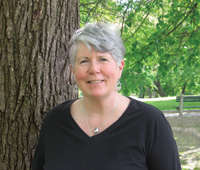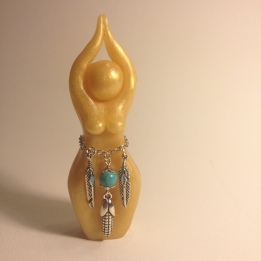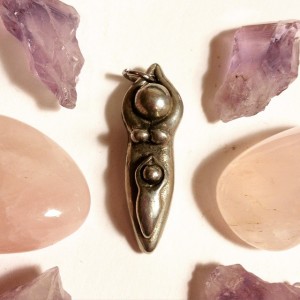 Okay, so I knew I would enjoy The Vagina Monologues. How could I not, right?! Well, I did not expect to be SO blown away by the power, presence, and passion of my magnificent friends. They were incredible. Seriously incredible. It was an amazing show! There were many powerful moments–some very funny, some sad, some horrifying. My friend, doula, and colleague did the piece on birth at the end and brought me to tears with her vibrance and passion. There was a moment in the middle where the teenage girl member of the cast read out some statistics on the One Billion women who are raped, abused, or assaulted. Each member of the cast began to rise in turn and as they did, their friends in the audience rose with them, until the whole theater was standing. We rose for justice.
Okay, so I knew I would enjoy The Vagina Monologues. How could I not, right?! Well, I did not expect to be SO blown away by the power, presence, and passion of my magnificent friends. They were incredible. Seriously incredible. It was an amazing show! There were many powerful moments–some very funny, some sad, some horrifying. My friend, doula, and colleague did the piece on birth at the end and brought me to tears with her vibrance and passion. There was a moment in the middle where the teenage girl member of the cast read out some statistics on the One Billion women who are raped, abused, or assaulted. Each member of the cast began to rise in turn and as they did, their friends in the audience rose with them, until the whole theater was standing. We rose for justice.
I’ve mentioned several times that I came to birth work with a core foundation in feminism and social justice work, primarily in domestic violence. I remain firmly convinced that the way we treat women in the birthplace reflects an overall cultural attitude towards women in general. I believe that peace on earth begins with birth. I believe that we can change the world with the way we greet new babies and celebrate new mothers and see the deep, never-ending work of parenting our children. I believe in rising for justice and I keep vigil in my heart every day for women around the world.
In a stroke of coincidence that gave me chills, my independent study student who is working on a Breastfeeding and Ecofeminism course submitted her weekly reflections and in it she mentioned Eve Ensler, The Vagina Monologues, and One Billion Rising with no idea that I was going to the show this week. As I read her reflections, the connection between the personal and political was so tangible that I asked her if I could use her assignment as a guest post for my blog. Part of the reason I assigned the book Reweaving the World for this course was because of how it contextualizes the issues facing women so broadly and makes this undeniable connection between exploitation of the planet and exploitation of women’s bodies. While it might sometimes trigger a sense of hopelessness and distress, I think ultimately, the contextualization is empowering. The Vagina Monologues are based on the courage of women telling their stories and sharing their truths. Likewise, I appreciate Alea’s generosity and courage in sharing her reflections with my readers…

Dancing for Change: A look inside a personal exploration of ecofeminism, sexuality, and social justice.
Guest post by Alea Scarff
I began reading The Politics of Breastfeeding which sparked a series of “hell, yes’s!” It also left me feeling inspired, excited and validated that I’m not the only one with these feelings and notions about women, breastfeeding, and the injustice I witness within this issue. Her kick-ass presentation of the truth among this profound cultural issue left me enlivened and ready for action sentence after sentence.
Then I read several pages of Reweaving the World: The Emergence of Ecofeminism. Yikes. This was heavy. I suddenly found myself caught between two worlds of inherent optimism excited for positive social change, and the deep dark issues of ecology and the longstanding reality of suffering and inequality of women on this planet. I felt my body overcome with anger. A feeling of helplessness ensued. I felt those women in third world countries starving and overheated, overworked and just trying to sustain the lives of their children on top of enduring mental, emotional, physical, and sexual abuse. I felt all the children who suffer because of this. I felt all of the gender imposing rules children in the western world are conditioned by, thus tainting our hearts and souls with limitation and sharp edges surrounding who we are allowed to be in this society. All of the emotionally repressed men; all of the objectified, degraded women who have never known what it feels like to feel good in their bodies.
I began to feel my grandmother’s oppression she suffered from my grandfather in the 60s. The abandonment, the sexual abuse, the use and re-use of her as a resource and service for himself. I felt my mother’s experience of an emotionally abusive relationship, and finally my experience of sexual molestation as a child. Where was all of this coming from? A deep sadness came over me as I desperately tried to figure out my own issues with sexuality and my relationship to the world as I sat amongst strangers in this warm coffee shop. Was I angry about what happened to me? Was I angry at my partner? Past partners? Was I angry at the world? I really couldn’t identify where the anger came from, or where it was directed. I had to stop, refresh, and start over. Maybe this shit is too intense for me. Maybe I need to change my course of study.
No, no. You can’t run away. I realized I had been running from this issue my whole life and it’s finally time to recognize it. I stopped, took some deep breaths, did some yoga asanas to release the sticky tensions of injustice lurking in my joints throughout my body. Ok. Begin again.
So I went back to my childhood, with my deepest memories of the frequent encounters of gender inequality. My mother, to this day, credits me for bringing to light her own femininity and capturing her attention to the inequalities of men and women. Something that went unnoticed until I came along, however she still was not interested in changing the ways of the world to the extent I was. She had her own social change she was working on. It was entrenched in art and consciousness. Luckily, I picked up on this, and found my own desire for changing the world through consciousness. Consciousness through equality for women. How could anyone else NOT be outraged by the fact that 8 out of 10 songs on the radio were sung by men? As a twelve year old, I began writing letters to radio stations. I couldn’t understand how no one seemed to care about this absurd injustice constantly happening on the radio. Something so simple yet so powerful as radio permeated our culture – and no one seemed to notice. There were a plethora of female musicians that I favored at this age. How could I not hear them on the radio? On top of an array of social issues such as this, I always HATED those older men who would make random, confusing, degrading comments to me for others’ and their own amusement. What the hell was up with that?
I began reading an interview with Eve Ensler, the creator of The Vagina Monologues and the global women’s campaign, One Billion Rising. The figures quoted from the UN in this interview left me in a deeper outrage. One billion women on the planet today are beaten or sexually assaulted. I reflected on an article I had read earlier that week, as well about how to talk with your children about their private parts and to help prevent them from being sexually abused. The article stated that one in five girls are sexually molested and one in six boys are. I never identified with the label “sexually molested” nor did I want to admit I was affected by this, but just in the last few years when I looked at the definition, I realized, even my few small inappropriate experiences are considered just that, and they have, in fact, affected me.
I had to take a few days off. This all needed to settle inside and I had to figure out what to do with it. I spent days pondering, how do I continue to explore this crucial subject and maintain a positive outlook? How do I channel this anger into solutions for helping others? How can I continue researching and hold my strength and goddess energy as a female role model, an inspiration for my two little boys, my partner, men and women, and the planet?
This is a tall aspiration I set for myself, I realize. I suppose this is simply what I aspire to be.
I began speaking with my mother about my sexuality from a young age and my exploration of it now. It was both comforting and disheartening to discover my mother had similar inappropriate sexual experiences as a child that I endured, as well as finding she’s still on her journey of understanding this taboo topic herself, female sexuality. Perhaps a running thread in my family of women? Or is this prevalent everywhere? Why is no one talking about it? Even after being so close with my mother, and being able to talk about anything for as long as I can remember, it took some courage to bring up this subject with her. Regardless, I am so glad I did.
I began to read again. I decided I had to begin with an open heart and mind, as I swim right through the obstacles of understanding the depths and spaces of the world of women and the planet. There is a lot to be grateful for, and a lot that needs changing. Positive reflection throughout this journey can only bring more light. Letting go and forgiving my past experiences, and the oppression the women I know and love have endured, I take a step into a new beginning. I can move forward continuing to understand my path of my sexuality growing up, and what this means for me now. I feel I’ve got a long way to go, and I can sense a gap of mystery and unknown feelings sitting somewhere inside. But I’m ready to embrace and heal whatever decides to reveal itself.
I am now in the process of releasing fear and letting go. Letting go of being afraid to speak up and stand up for what’s right; of being viewed as a bitch, uptight, or simply being exposed. We as women need to start somewhere within this realm in order to ignite change. Rather than accepting these old cultural paradigms and letting them continue to thrive within this patriarchal society, it’s time to change this tired, destructive trend. As Ensler quotes in a recent interview with Deccan Aitkenhead for The Guardian, “We have one in three women on the planet being raped or beaten…We’ve all learned to be so well behaved and polite. We should be hysterical.”
Ensler launched One Billion Rising which, on Valentine’s Day in 2013 brought close to one billion women out on the streets to protest against violence towards women. Ensler’s goal is to have one billion gather on February 14th outside buildings that represent justice – police stations, courthouses, and government offices – and dance. That’s it. Where and how they dance is up to them; each is organized at a local level. In this, I found tremendous uplifting relief.
Through this personal revelation, I’ve decided to remain free – and not restrained by anger or resentment of injustice. I simply cannot move forward or flourish from that space. We must find liberation through the endurance, triumph and the celebration of womanhood. Simply. This is the only way to encourage and create change. I must release the tensions that like to creep up and burrow inside my joints and muscles. I no longer will walk around carrying this stuff – I’d rather be dancing than dwelling. This is the only way I will find my way to living up to my goddess vibration of inspiration for social change for my two little boys, my partner, women and men, and the planet collectively.
Next year on Valentine’s Day, I think I will be dancing.
 “But when you suddenly understand that violence against women is the methodology that sustains patriarchy, then you suddenly get that we’re in this together. Women across the world are in this together.” –Eve Ensler
“But when you suddenly understand that violence against women is the methodology that sustains patriarchy, then you suddenly get that we’re in this together. Women across the world are in this together.” –Eve Ensler
 how individuals can make better health choices.
how individuals can make better health choices. State University, Case Western Reserve University and most recently West Virginia University. In 1998 she went into private practice with her husband, Tom, an OB/Gyn, in Morgantown, West Virginia. Here they devoted their lives to caring for women and bringing babies into the world in a gentle way. Patricia Harman still lives with her husband, Thomas Harman, in Morgantown, West Virginia. She recently retired from her thirty-five years of midwifery so she could write more books for people like you!
State University, Case Western Reserve University and most recently West Virginia University. In 1998 she went into private practice with her husband, Tom, an OB/Gyn, in Morgantown, West Virginia. Here they devoted their lives to caring for women and bringing babies into the world in a gentle way. Patricia Harman still lives with her husband, Thomas Harman, in Morgantown, West Virginia. She recently retired from her thirty-five years of midwifery so she could write more books for people like you!















